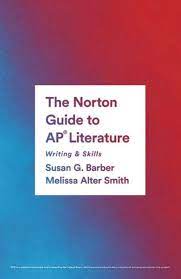In response to Brian’s post a couple of week’s ago on writing commentary, I invited Melissa Smith to share her method of giving feedback. Her feedback is quick and individualized. Thanks, Melissa! I’ll be following up in a couple of weeks with how I handle feedback and revision.
I have 100 students in 4 sections of AP Lit this year, and they just turned in their first FRQ3 essay. Lucky for me, I have my past-self from one year ago to thank for making my job of providing individualized feedback on all 100 essays easier and more efficient.
Last year, with this same FRQ3 essay, and with every other essay that I assigned throughout the year, I kept a running doc of comments. For every comment that I typed on a student’s essay that I thought I might write again for another student, I copy and pasted it to my running doc of comments. My feedback is geared toward the rubric, so I ordered my comments on the doc with the rows of the rubric: all of the thesis statement comments are up top, followed by feedback for evidence and commentary, etc.
This year, all I have to do is pull up last year’s comments doc and copy and paste my old comments onto this year’s students’ essays. The comments don’t change because the rubric is the same and the prompt is the same. Sure, there are some outliers that will need extra attention, but, honestly, that’s pretty rare. Some of my most used comments that I’m constantly copy and pasting are:
- Great job at being specific in your scenes/examples and crafting a clear and controlled line of reasoning. You include apt specific details to fully support your thesis. Every paragraph is strong in both evidence and analysis.
- I encourage you to remember to go into more detail about the scenes from the book you choose as your evidence for your body paragraphs, and to fully develop their analysis. Ask yourself why this scene is important and how it supports your thesis.
- Nice job at tying back to the theme in each body paragraph to build your line of reasoning.
I have a slew of comments for improving Sophistication:
- One thing to keep in mind for future essays is using synonyms for the prompt words – “alienating” and “enriching” get a little repetitive.
- Revise for varied sentence lengths. Your sentences are all the same length so your syntax is choppy. Improving sentence length variety will help with fluency, as well.
- Include transitions in between paragraphs to help with cohesion of your ideas.
As this is the first essay, most of my feedback is positive, or if it is critical, it is constructive. I want to build up my students’ confidence in writing, so I allow them to work on their first essay in class in stages, after much group discussion and pre-writing. I’m there to answer questions and conference with them, and they are free to discuss openly with peers as they work on their essays. As such, these first essays are typically really good. Lots of 1-3-0s, 1-4-0s, and even 1-4-1s. As an AP Reader, the phrase “reward them for what they do well” rings in my heart forever, so I have lots of comments that notice strong elements of student writing:
- You have a skill for tying back to the theme in each body paragraph without sounding repetitive and offering important insights into the meaning of the work as a whole.
- The first body paragraph is your strongest – it has the most specific textual evidence paired with solid commentary.
- Good job at mentioning the end of the book at the end of your essay; it provides a nice sense of closure.
As the final part of my feedback, and I would argue the most important, each student gets at least one personal shout out for something I think they did really well in their essay. I copy and paste a phrase like:
- You have some really nice moments in your writing where I can hear your writer’s voice (i.e., “ “),
I then copy and paste a sentence from their essay into the quotation marks. Instant individualized feedback with a personal touch and it takes me two seconds.
When it’s all said and done, this is what a completely copy-and-pasted comment looks like on one of my most talented writer’s essays:
1 – 4 – 1. Solid thesis statement that is defensible and provides an interpretation of the work. Great job at being specific in your scenes/examples and crafting a clear and controlled line of reasoning. You include apt specific details to fully support your thesis. Every paragraph is strong in both evidence and analysis. Writing is clear, controlled, and sophisticated throughout. You have some bars in here that really sing (i.e., “Additionally, the dire circumstances presented in times of war lead to even harder decisions that must be made, as lives are constantly on the line because death is not an “if” but a “when.””) The conclusion is especially effective in its thematic discussion and serves as a nice culmination to your line of reasoning. Excellent work, Keegan.
I timed myself using my strategy to see how much it cut down on grading time. Last year, I would guess it took me 10 minutes on average to read, score, and provide feedback on one essay. This year, with my copy and paste method, I averaged at four minutes. Two minutes to read the essay. Two minutes for feedback. Done. Next essay.
It took me a year to gather all of my comments for all of my essays, but boy was it worth it. I am so thankful for last-year-me for saving present-me time. Start yourself a comments doc and next-year-you will be thanking present-you!
Note: Sorry to the paper-and-pencil people out there, because this strategy that cut my scoring time in half (at least) only works for digitally submitted essays. On second thought, I suppose you could have your students take pictures of their handwritten essays and submit the pics to provide you with a digital space to provide comments. By all means, still collect the paper essays for reading purposes and to save your eyeballs, but your comments can then be typed and digitally shared with students so that this feedback approach can work for you too!

Melissa Alter Smith is a high school English teacher in Charlotte, where she earned the 2017 District Teacher of the Year, as well as an AP® Reader and AP® Consultant. She is the creator of #TeachLivingPoets and TeachLivingPoets.com. Melissa is co-author of Teach Living Poets, and the Norton Guide to AP® Literature. Her work is focused on complicating the canon, supporting teachers, and empowering students through poetry.












